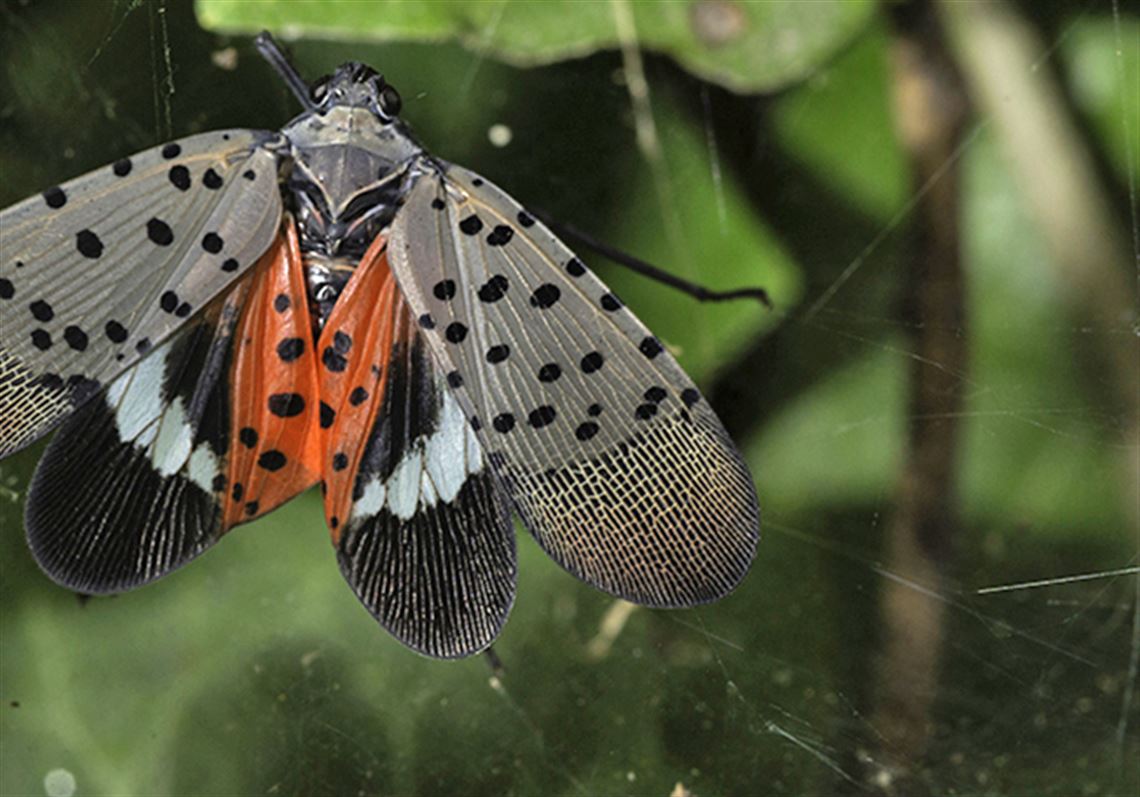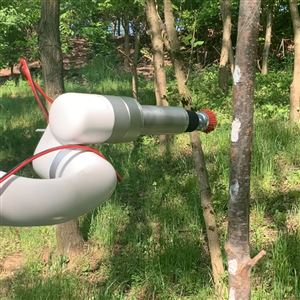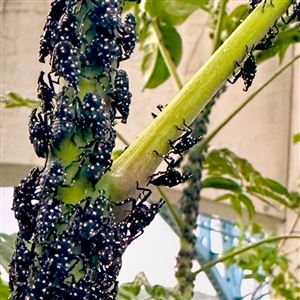Recently this reporter stood at a stoplight in East Liberty, waiting to cross the street, and unwittingly entered a modern problem of truly gross proportions: Not only was a swarm of spotted lanternflies congregating around the base of the traffic light, but they surrounded passersby mid-air, leading, briefly, to a kind of insect tornado.
By this point, unfortunately, most Pittsburghers have similar tales of unwanted interactions with the invasive insect.
It’s not surprising, then, that the Allegheny County Health Department has received a steady flow of calls about what to do about the well-known pests.
The ACHD offered tips this week about how residents can eradicate spotted lanternflies, which begin laying eggs this time of year.
The invasive insect, which first entered the U.S. via Berks County near Allentown in 2014, has been thriving throughout Pennsylvania, decimating crops and gathering en masse at the foot of buildings and along bridge railings.
Though it isn’t ACHD’s purview to deal with the spotted lanternfly directly, it said in a Tuesday news release that it had received numerous and consistent inquiries from residents asking what it was doing to address the swelling number of the invasive pests.
“Because the insects do not pose a threat to the physical health of residents, the department is not directly involved in response, but has provided the following information on how to combat the lanternfly population,” the ACHD said.
These suggestions include:
- Killing lanternflies on sight
- Removing tree of heaven trees, which the insect likes to feed on
- Using pesticides on the insects
- Removing egg masses before the lanternflies are born
Tree of heaven trees were brought to Philadelphia from China in the 1700s and have since become an invasive species, popular among spotted lanternflies for feeding and egg laying. While difficult to control, experts at Penn State University recommend spraying the trees with herbicide, waiting 30 days and then attempting to cut down.
As far as which pesticides to use, the Penn State Extension recommends only using Environmental Protection Agency-approved insecticides to treat spotted lanternflies, and not using homemade remedies which may be more toxic to the environment than residents realize. Residents should also aim to protect pollinators as well as streams and waterways.
“Residents should choose the least-toxic management method that will work,” the Extension noted on its website. “If you decide to use an insecticide to kill SLF, there are some important safety measures and pesticide rules to follow. Before using any pesticide product, always read the label and be informed to be safe.”
Removing egg masses can potentially ameliorate the problem before it begins. Spotted lanternfly egg sacs — each can hold 30-50 eggs, per the Penn State Extension — look gray or brown and clumpy, and attach to tree trunks.
“Spotted lanternfly egg masses are laid in the late summer and into the early winter, with the majority of egg mass deposition occurring in October,” said the ACHD.
Entering the fall season, you may start to see more egg sacs on trees. Penn State Extension does not recommend using ladders to tackle nests that are unreachable, but lower sacs can be scraped off with a flat surface, such as a putty knife or credit card. The Extension suggests scraping the nests into a plastic bag and adding rubbing alcohol or hand sanitizer to kill them, as masses scraped onto the ground can still hatch.
The good news, said Tracy Leskey, a supervisory research entomologist at the United States Department of Agriculture, is that while spotted lanternflies will feed on apple and peach trees, they move among many hosts. Leskey is working on various methods of spotted lanternfly population control with the USDA.
They “likely are not going to cause severe impacts in fruit orchards,” said Leskey in an email. The pests have been known to feed on orchards, specifically vineyard grapes. Farmers near Pittsburgh have reported some evidence of lanternfly infestation, but only a couple of farms reported infestations between 26-50% (most were between 1-10%). Some said nymph populations decreased after insecticide application, but that method did not work for all farmers.
To report egg masses or to get more information about how to tackle the pest, call the Penn State Extension spotted lanternfly hotline at: 1-888-4BA-DFLY (1-888-422-3359).
Hanna Webster: hwebster@post-gazett.com
First Published: September 20, 2023, 9:30 a.m.
Updated: September 21, 2023, 11:12 a.m.





















